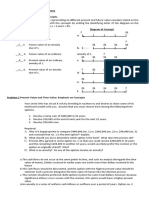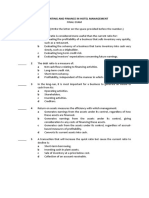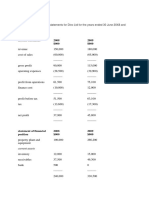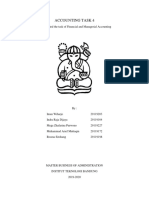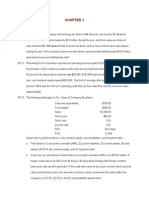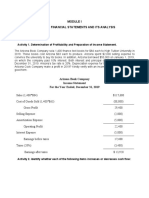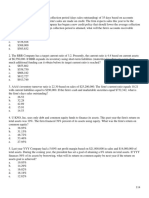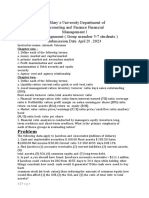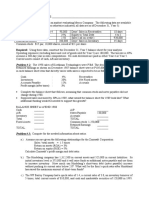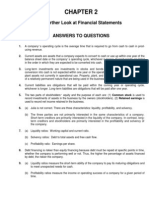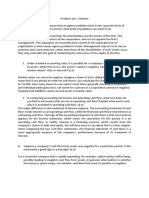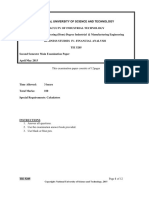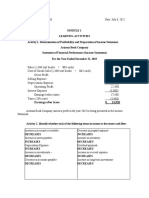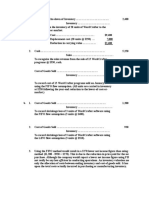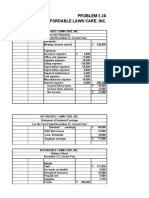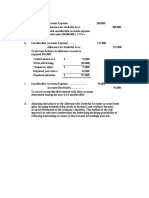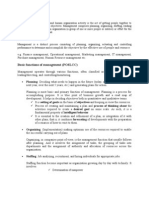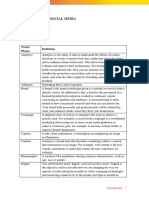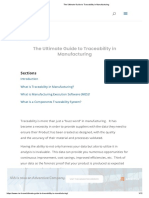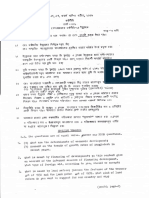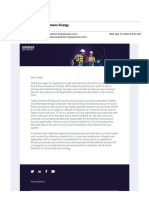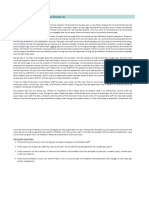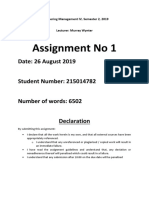0% found this document useful (0 votes)
163 views9 pagesSolution Aassignments CH 14
Outdoor World Inc. performs significantly better than industry averages. Its operating income and net income are over twice the industry average percentages of sales. The key to its success is a relatively high gross profit rate of 51% compared to the industry average of 42%, likely due to premium pricing and lower manufacturing costs. While selling expenses are higher than average at 21% of sales versus 16% for competitors, the gross profit advantage of 9 percentage points exceeds this difference.
Uploaded by
RuturajPatilCopyright
© © All Rights Reserved
We take content rights seriously. If you suspect this is your content, claim it here.
Available Formats
Download as XLSX, PDF, TXT or read online on Scribd
0% found this document useful (0 votes)
163 views9 pagesSolution Aassignments CH 14
Outdoor World Inc. performs significantly better than industry averages. Its operating income and net income are over twice the industry average percentages of sales. The key to its success is a relatively high gross profit rate of 51% compared to the industry average of 42%, likely due to premium pricing and lower manufacturing costs. While selling expenses are higher than average at 21% of sales versus 16% for competitors, the gross profit advantage of 9 percentage points exceeds this difference.
Uploaded by
RuturajPatilCopyright
© © All Rights Reserved
We take content rights seriously. If you suspect this is your content, claim it here.
Available Formats
Download as XLSX, PDF, TXT or read online on Scribd
/ 9
